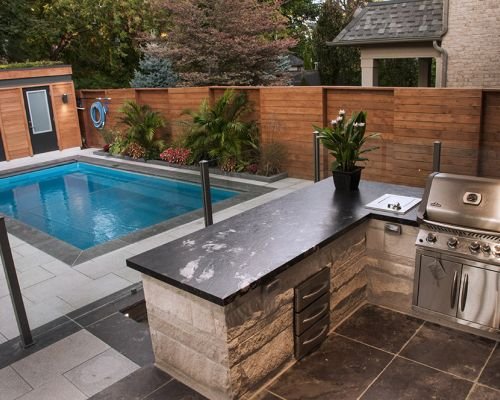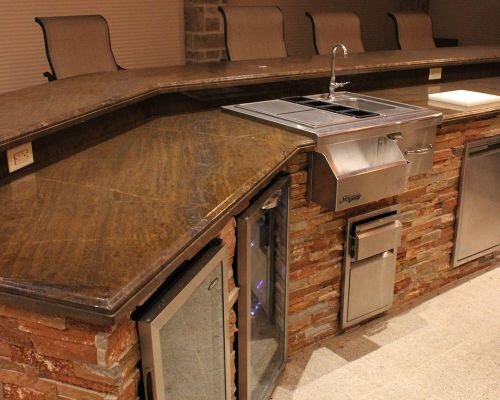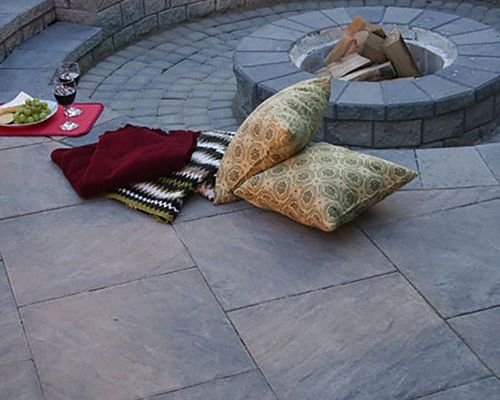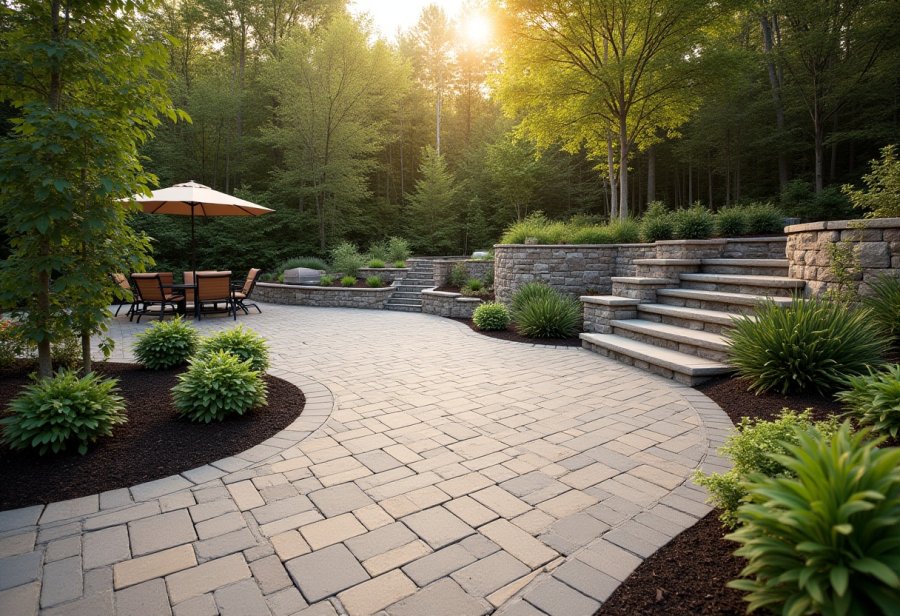Transforming Toronto yards into captivating outdoor retreats is more than just a design trend—it’s a delicate balancing act of beauty, sustainability, and client happiness. How can homeowners create spaces that are visually stunning, eco-friendly, and tailored to their lifestyle? This guide explores how thoughtful landscape design, rooted in principles of harmony, scale, and focal points, can craft personalized sanctuaries that withstand Toronto’s climate while supporting local ecosystems. Sustainable practices like native plants, permeable surfaces, and renewable energy features are not compromises but essential elements for resilience and long-term enjoyment. Real-world case studies reveal how strategic planting and innovative features turn modest yards into vibrant, functional environments that boost daily well-being. As technology advances and eco-consciousness deepens, future landscapes promise even smarter, more resilient, and more connected outdoor living spaces—raising the question: what will your outdoor retreat say about your vision for harmony between beauty and sustainability?
Transform Your Outdoor Space with Toronto Landscape & Design
Looking to elevate your Toronto backyard? Toronto Landscape & Design (TLD) offers expert backyard makeover services that transform outdoor spaces into stunning retreats. Our award-winning designers consider every detail, from natural stone features and water gardens to custom irrigation systems and retaining walls. Whether you’re seeking a peaceful oasis or a lively entertainment area, TLD has the expertise to bring your vision to life. Contact us today at mike@torontolandscapedesign.com or call 1.416.644.0499 to start your backyard transformation in Toronto.

Transforming Toronto Yards into Personal Retreats: Elevate Your Outdoor Space
Transforming Toronto yards into inviting outdoor retreats is more than just a design trend—it’s a way for homeowners to make the most of limited space while creating personal sanctuaries. In a city where many yards are compact, the goal is to turn these areas into functional, beautiful environments that reflect individual style and support everyday living. A well-designed outdoor space isn’t solely about visual appeal; it’s about crafting a place where people can relax, entertain, and connect with nature without leaving home.
Toronto’s climate adds an extra layer of consideration. Changing weather conditions mean that landscape choices need to be durable and resilient. Selecting native plants and eco-friendly materials helps ensure these outdoor retreats last through seasons and weather swings, all while supporting local ecosystems. These sustainable options also reduce ongoing maintenance, making it easier for homeowners to enjoy their yards year-round.
Creating a successful transformation involves balancing several key objectives. Visual appeal is vital—yards should feel welcoming and reflect personal taste. But functionality matters just as much. Whether it’s a cozy nook for quiet mornings or a lively space for gatherings, the yard must cater to how homeowners want to use it. Privacy features like strategic planting or fencing help foster a sense of security, encouraging more frequent outdoor use.
Design principles such as balance, scale, and focal points guide these projects. Achieving harmony between plants, hardscapes, and features creates a cohesive look that feels natural and inviting. Thoughtfully placed focal points—such as a striking sculpture or vibrant flower bed—add character and draw the eye. Smooth flow between zones like dining, lounging, and play areas makes the space inviting and easy to navigate.
Sustainable practices further enhance these outdoor retreats. Incorporating permeable surfaces, native plants, and organic maintenance methods not only beautify the yard but also support environmental health. Solar lighting and rainwater harvesting add eco-friendly features that boost efficiency while elevating the overall design.
Every yard presents unique challenges and opportunities. Some may require vertical gardening solutions for small spaces, while others benefit from multiple zones to serve different activities. Listening carefully to homeowners’ preferences and understanding the site’s specific conditions ensures that the transformation feels authentic, personalized, and sustainable.
By focusing on these core principles, landscape transformations in Toronto can truly blend beauty, sustainability, and client satisfaction. The result is an outdoor retreat that enhances daily life and stands the test of time, turning ordinary yards into extraordinary personal escapes.
Core Principles of Landscape Design: Creating Harmony and Balance
Effective landscape design hinges on creating harmony within the outdoor space. Balance is essential; it ensures that no single element overwhelms the yard, allowing plants, hardscapes, and features to work together seamlessly. When each component is thoughtfully placed and scaled appropriately, the entire landscape feels cohesive and inviting. Achieving this harmony transforms a cluttered or disjointed yard into a unified environment that naturally attracts the eye.
Scale and proportion are equally vital. An oversized fountain or sprawling patio may dominate a small yard, making the space feel cramped. Conversely, tiny features in a large yard can seem insignificant. The key is matching the size of each element to the overall space, fostering a natural flow that feels both comfortable and intentional. Proper proportions help create a balanced atmosphere, where every feature enhances the overall design rather than competing with it.
Focal points add depth and personality. They serve as visual anchors that draw attention and guide movement through the landscape. Whether it’s a striking sculpture, a vibrant flower bed, or a water feature, focal points provide purpose and character. Well-placed features encourage exploration and make the space more engaging, preventing it from feeling static or monotonous.
Flow and accessibility underpin functionality. Pathways, seating areas, and activity zones should connect effortlessly, encouraging smooth movement throughout the yard. Thoughtful circulation prevents awkward dead ends and awkward transitions, making the space inviting for everyday use. Defining zones—like dining areas separate from lounging spaces—without disrupting harmony creates an environment that is both practical and aesthetically pleasing.
Sustainability is woven into these fundamental principles. Choosing native plants reduces water and maintenance needs, while durable hardscapes made from eco-friendly materials withstand Toronto’s climate. Incorporating features like permeable pavements or rain gardens not only supports environmental health but also enhances the yard’s resilience. When sustainability aligns with design, the landscape remains vibrant and manageable over time.
Understanding the site’s conditions is crucial. Factors such as sunlight, soil quality, and microclimates influence plant selection and hardscape choices. Tailoring the design to these specifics ensures durability and ease of maintenance. A thoughtfully adapted landscape feels natural, supporting both aesthetics and long-term sustainability.
Ultimately, effective landscape design balances visual appeal with practicality. It’s about creating a space that feels harmonious, functions effortlessly, and reflects the homeowner’s style. When these core principles are applied thoughtfully, yards evolve into outdoor retreats that are not only beautiful but also sustainable and welcoming—spaces that truly enhance daily life.

Eco-Friendly Landscaping: Sustainable Practices for a Greener Yard
Implementing sustainable practices in outdoor spaces means making intentional choices that minimize environmental impact while enhancing beauty and functionality. One of the most effective methods is using permeable paving options like gravel or porous concrete. These surfaces allow rainwater to seep into the ground, helping reduce runoff, prevent erosion, and support the natural water cycle. They also ease pressure on stormwater systems, making them a smart and eco-friendly choice for Toronto’s urban landscape.
Incorporating native plants forms the backbone of eco-conscious landscaping. These species are naturally adapted to local conditions, requiring less water, fertilizers, and pesticides. They support native wildlife, providing habitat for bees, butterflies, and birds, which in turn strengthens local ecosystems. Native plants are not only resilient but also add authentic beauty to the yard, creating a landscape that is easier to maintain and more sustainable over time.
Organic fertilizers and pest control methods further reduce the landscape’s environmental footprint. Chemical-based options can harm beneficial insects and pollute waterways, but organic alternatives promote healthier soil and plant growth naturally. This approach fosters a balanced ecosystem, encouraging self-sustaining gardens that are gentle on the environment and require fewer chemical interventions.
Adding renewable energy features like solar-powered lighting and rainwater harvesting systems elevates eco-friendly design. Solar lights illuminate pathways and highlight landscape features without increasing energy consumption. Rainwater collection can irrigate plants or power small fountains, reducing reliance on municipal water and fossil fuels. These small but impactful upgrades seamlessly integrate sustainability into outdoor living spaces.
Choosing durable, eco-friendly materials for hardscapes is equally important. Recycled or reclaimed materials for patios, walkways, and fencing not only reduce waste but also withstand Toronto’s climate. These resilient choices help ensure the landscape remains vibrant and intact over years, minimizing the need for frequent repairs or replacements.
Designing with sustainability in mind is about thinking long-term. Features like rain gardens and bio-swales naturally manage stormwater, preventing flooding while recharging groundwater. These ecological elements blend seamlessly into the landscape, supporting environmental health and adding visual interest. They turn sustainable design into a core feature rather than an afterthought.
Sustainable landscaping isn’t a compromise. It’s about creating a harmonious balance between environmental responsibility and aesthetic appeal. When eco-friendly practices are integrated thoughtfully—through native plantings, durable materials, and energy-efficient features—the result is a yard that’s both beautiful and resilient. This approach supports the health of the landscape and the planet, ensuring outdoor retreats that stand the test of time.
By weaving these practices into every stage of the design process, homeowners can craft outdoor spaces that are not only stunning but also environmentally responsible. These landscapes support local biodiversity, conserve resources, and reflect a genuine commitment to sustainability. The result is a personal retreat that nurtures both the environment and your everyday well-being, proving that beauty and sustainability go hand in hand.
For those interested in further enhancing their eco-friendly landscape, exploring resources on sustainable garden design can provide valuable insights. Incorporating innovative ideas and practical tips can help create a truly environmentally responsible outdoor space. To learn more about sustainable landscaping practices, check out this comprehensive guide on sustainable landscaping.
Real-World Success Stories: Inspiring Toronto Yard Transformations
Transforming Toronto yards into inviting outdoor retreats is best showcased through real projects that demonstrate what’s possible when thoughtful design meets practical execution. One homeowner aimed for a low-maintenance yet lush garden. By blending native grasses with sleek hardscaping, they created a space that feels vibrant and inviting without demanding constant upkeep. This example highlights how native plants can reduce watering and pruning while supporting local ecosystems, proving that beauty doesn’t have to come at the cost of simplicity.
Another project focused on enhancing privacy in a narrow backyard. Strategic planting of trees and shrubs, combined with a custom fence, transformed a tight space into a cozy retreat perfect for family gatherings or quiet evenings. This approach shows how greenery and fencing can make small yards feel more expansive and secure, encouraging homeowners to use their outdoor spaces more often and with greater confidence.
Many Toronto residents have shared stories of how their yard transformations changed their lifestyles. One family turned a neglected patch into a lively outdoor living room, complete with a dining area and play zone. They appreciated how the design reflected their eco-friendly values, making maintenance easier and creating a space that supports their active, outdoor-centered lifestyle. These stories reinforce that a well-planned landscape can boost daily happiness and truly feel like an extension of home.
These projects also emphasize the importance of understanding each site’s unique conditions. For example, a previously dull yard now thrives with native pollinator plants and rain gardens, attracting bees and butterflies while managing stormwater naturally. Such ecological features add aesthetic appeal and resilience, illustrating how environmental considerations can enhance overall design quality and sustainability.
Even small yards can become stunning retreats with tailored solutions. Whether it’s creating multiple zones for different activities or making use of vertical gardening in limited space, these strategies show that personalization makes a significant difference. Close collaboration between homeowners and designers ensures the final result aligns with personal preferences, making the outdoor retreat both functional and beautiful.

Future Trends in Landscape Design: Innovation and Sustainability Ahead
Looking ahead, landscape design in Toronto is set to embrace innovative trends driven by technology and a renewed focus on sustainability. Smart outdoor systems, equipped with sensors and automation, will allow homeowners to manage watering, lighting, and climate control remotely. These advancements not only save time but also help conserve resources, making outdoor spaces more responsive and efficient. As technology continues to evolve, yards will become increasingly personalized environments that adapt seamlessly to weather conditions and user needs.
Sustainable practices will remain at the forefront of landscape development. Solar-powered features, rainwater harvesting, and eco-friendly materials will become standard elements in outdoor design. Recycled and reclaimed materials for hardscapes, combined with native, drought-tolerant plants, will help create resilient landscapes that withstand Toronto’s variable climate. These choices ensure outdoor retreats remain vibrant and functional over the long term, reducing environmental impact while maintaining aesthetic appeal.
Biophilic design principles will deepen the connection between people and nature. Future landscapes will blur the lines between indoor and outdoor spaces, incorporating green walls, organic shapes, and naturalistic plantings that foster a sense of calm and well-being. These immersive environments will serve as restorative sanctuaries, responding to a growing desire for meaningful outdoor experiences that nurture mental health and vitality.
Climate resilience will become a central focus, with yards designed to withstand extreme weather events. Drought-tolerant plants, permeable surfaces, shaded zones, and natural stormwater management features like rain gardens will help yards remain functional and attractive year-round. These adaptations will ensure outdoor spaces continue to provide comfort and beauty despite climate unpredictability, supporting sustainable living practices.
The integration of smart technology, eco-friendly materials, and biophilic elements will define the most successful outdoor spaces of the future. Landscapes will be crafted as cohesive ecosystems that support local biodiversity, conserve resources, and elevate everyday living. As homeowners seek environments that are both beautiful and responsible, landscape professionals who stay ahead of these trends will lead the way in creating resilient, personalized retreats.
Ongoing innovation will foster outdoor environments that are more connected, sustainable, and tailored to individual lifestyles. The focus will shift from simply aesthetic considerations to designing ecosystems that promote ecological health, energy efficiency, and personal well-being. This evolution in landscape design will ensure Toronto’s outdoor retreats remain vibrant, functional, and aligned with the values of environmental stewardship for years to come.






